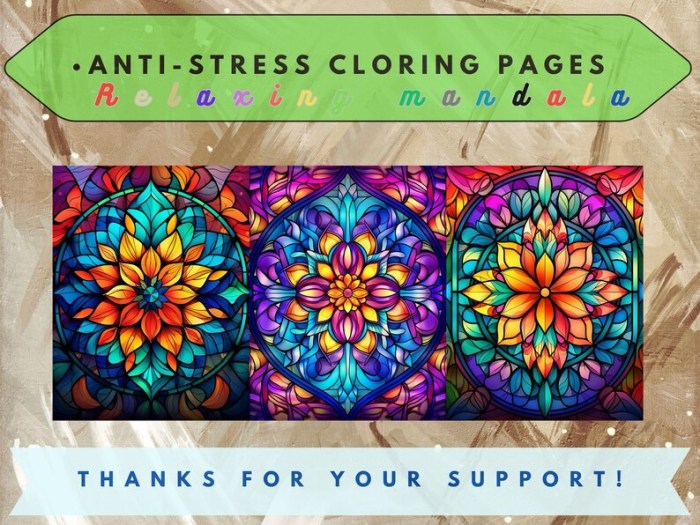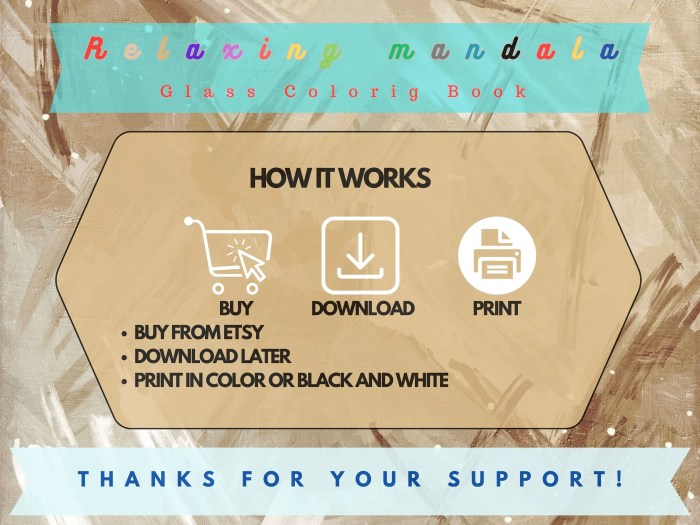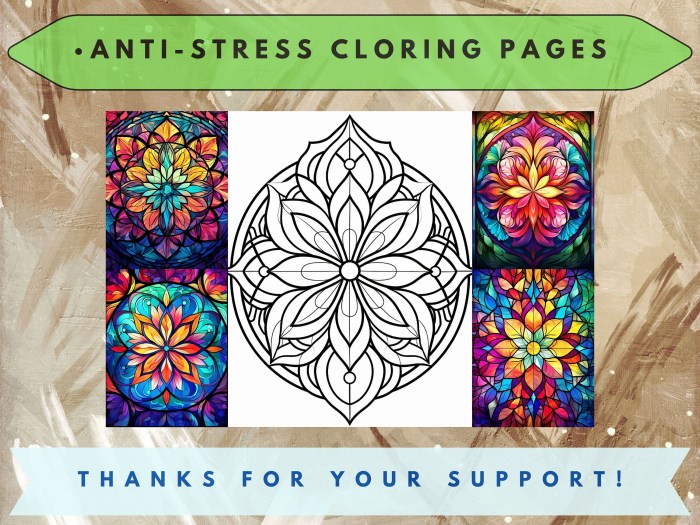Ever gazed at a breathtaking stained glass window and felt a surge of awe? Imagine capturing that same beauty, that same intricate detail, with the stroke of a colored pencil. That’s the magic of stained glass coloring books. They’re not just for kids; they’re a vibrant, engaging way for anyone to explore the captivating world of stained glass art.
These coloring books offer a unique blend of history, artistry, and relaxation. You’ll journey through centuries of stained glass craftsmanship, learning about its evolution, techniques, and symbolic meanings. From the intricate floral patterns of medieval cathedrals to the bold geometric designs of the Art Nouveau movement, each page is a window into a different era and artistic style.
The Art of Stained Glass Coloring

Stained glass coloring offers a unique way to explore the beauty and history of this ancient art form. It allows you to bring to life the vibrant colors and intricate designs of stained glass windows, using readily available coloring tools.
By understanding the history, techniques, and symbolism behind stained glass, you can enhance your coloring experience and create stunning works of art that capture the essence of this timeless craft.
The History and Evolution of Stained Glass
Stained glass art has a rich and fascinating history, dating back to ancient times. The earliest examples of stained glass were discovered in Roman and Byzantine periods, where small pieces of colored glass were used to create mosaics. The development of stained glass windows as we know them today began in the Middle Ages, during the 12th century.
During this time, stained glass became an integral part of Gothic architecture, adorning cathedrals and churches throughout Europe. Stained glass windows were often used to tell stories from the Bible, depict saints and other religious figures, or illustrate important events in history.
The use of stained glass expanded beyond religious themes in the Renaissance, with artists incorporating more secular subjects into their designs. The 19th century saw a revival of interest in stained glass, with the development of new techniques and materials.
Today, stained glass art continues to evolve, with contemporary artists exploring new forms and styles.
Techniques Used in Traditional Stained Glass Creation
Traditional stained glass windows are created using a process that involves cutting, shaping, and assembling pieces of colored glass. The first step involves creating a design, often drawn on paper or parchment. The design is then transferred to a piece of lead came, which acts as a frame for the glass pieces.
The glass is cut into the desired shapes using a glass cutter, and the edges are ground smooth to prevent sharp edges. The pieces of glass are then placed within the lead came, and the joints are soldered together to create a strong and durable window.
The window is then cleaned and polished to enhance its beauty. The use of lead came to hold the glass pieces together creates the distinctive lines that are characteristic of stained glass windows.
Symbolism and Meaning in Stained Glass Designs
Stained glass designs often carry deep symbolism and meaning, reflecting the beliefs and values of the time period in which they were created. In religious contexts, stained glass windows often depict biblical scenes, saints, or other religious figures. The colors used in stained glass also hold symbolic significance.
For example, blue often represents heaven, red symbolizes Christ’s blood, and gold signifies divine power. The intricate designs and patterns found in stained glass windows often reflect the craftsmanship and artistry of the time period, and they can be interpreted as representations of spiritual concepts, historical events, or personal stories.
Famous Stained Glass Windows and Their Stories
Many famous stained glass windows around the world have fascinating stories to tell. One of the most iconic examples is the Rose Window in Notre Dame Cathedral in Paris. This breathtaking window, completed in the 13th century, depicts the life of the Virgin Mary and is a masterpiece of Gothic stained glass art.
Another notable example is the Great East Window of York Minster in England. This window, completed in the 15th century, is one of the largest stained glass windows in the world and features scenes from the Bible. The stained glass windows in the Sagrada Familia in Barcelona, designed by Antoni Gaudí, are known for their unique and vibrant colors and intricate patterns.
These windows represent the life of Christ and are a testament to Gaudí’s architectural genius.
Tips for Creating Realistic Stained Glass Effects
To create realistic stained glass effects with colored pencils, markers, or crayons, consider the following tips:
- Use a variety of colors: Experiment with different shades and hues to create depth and dimension in your design.
- Layer your colors: Apply light colors first and then add darker shades to create depth and highlights.
- Use blending techniques: Blend your colors smoothly to create a seamless transition between shades.
- Add texture: Use stippling, hatching, or cross-hatching techniques to create texture and detail in your design.
- Create highlights and shadows: Use lighter colors for highlights and darker colors for shadows to create a sense of three-dimensionality.
- Emphasize the lead came: Use a dark color, such as black or brown, to create the lead came lines that frame the glass pieces.
- Experiment with different tools: Try using different colored pencils, markers, or crayons to create different effects.
Stained Glass Coloring Book Designs

Stained glass coloring books offer a vibrant and intricate world of creativity, inviting colorists to bring these designs to life. They feature a diverse range of styles, themes, and complexity levels, catering to various interests and skill sets.
Types of Stained Glass Designs
Stained glass coloring books showcase a variety of design styles, each offering a unique visual experience. Some common styles include:
- Geometric: Geometric designs are characterized by precise shapes, patterns, and lines, creating a sense of order and structure. They often feature repeating motifs like squares, triangles, and circles, forming intricate tessellations. Examples include designs inspired by Islamic art, Celtic knots, and Art Deco architecture.
- Floral: Floral designs capture the beauty and intricate details of flowers, leaves, and vines. They often feature delicate petals, swirling stems, and vibrant colors, creating a sense of natural beauty and elegance. These designs are often inspired by Victorian art and botanical illustrations.
- Animal: Animal designs depict a variety of creatures, from majestic birds and playful butterflies to mythical beasts and fantastical creatures. They often feature detailed textures, intricate patterns, and expressive features, bringing these animals to life through color.
- Abstract: Abstract designs are characterized by their non-representational nature, focusing on shapes, colors, and textures rather than recognizable objects. They often evoke emotions and feelings, allowing for a more personal interpretation and creative expression.
- Religious: Religious designs often depict sacred figures, symbols, and scenes from religious texts. They may feature intricate details, symbolic imagery, and vibrant colors, reflecting the spiritual significance of these themes.
Popular Themes and Motifs
Stained glass coloring books often incorporate popular themes and motifs that resonate with colorists. Some common themes include:
- Nature: Nature-inspired designs are a popular choice, featuring flowers, trees, animals, and landscapes. These designs offer a sense of tranquility and connection to the natural world.
- Fantasy: Fantasy themes are often featured in stained glass coloring books, with designs depicting mythical creatures, dragons, fairies, and magical landscapes. These designs appeal to those who enjoy imaginative and fantastical worlds.
- Holidays: Holiday-themed designs are popular for seasonal celebrations, featuring designs related to Christmas, Easter, Halloween, and other holidays. These designs often incorporate traditional symbols and imagery, bringing festive cheer to coloring sessions.
- Animals: Animal designs are popular among colorists, showcasing a variety of creatures, from domestic pets to exotic animals. These designs often capture the beauty and individuality of different species.
Complexity and Detail of Designs
Stained glass coloring books cater to different skill levels, offering designs ranging from simple to intricate.
- Beginner: Beginner-friendly designs often feature simple shapes, limited colors, and larger areas to color. These designs are perfect for those new to stained glass coloring or those looking for a relaxing and enjoyable experience.
- Intermediate: Intermediate designs offer a balance of complexity and detail, featuring more intricate shapes, a wider range of colors, and smaller areas to color. These designs challenge colorists to refine their skills and explore different color combinations.
- Advanced: Advanced designs are highly intricate, featuring detailed patterns, numerous colors, and very small areas to color. These designs require a high level of precision, patience, and skill, rewarding colorists with stunning and intricate finished pieces.
Styles of Stained Glass Artists
Stained glass artists have a wide range of styles, each influencing the designs found in coloring books.
- Gothic: Gothic stained glass is known for its intricate patterns, vibrant colors, and religious themes. Designs often feature pointed arches, geometric shapes, and symbolic imagery. Examples include the stained glass windows of Notre Dame Cathedral in Paris.
- Art Nouveau: Art Nouveau stained glass emphasizes flowing lines, organic shapes, and natural motifs. Designs often feature stylized flowers, insects, and animals, creating a sense of elegance and movement. Examples include the work of Louis Comfort Tiffany.
- Art Deco: Art Deco stained glass is characterized by geometric patterns, bold colors, and a sense of modernism. Designs often feature stylized geometric shapes, metallic accents, and abstract motifs. Examples include the stained glass windows of the Chrysler Building in New York City.
Stained Glass Coloring Book Designs Table
| Design Type | Features | Target Audience |
|---|---|---|
| Geometric | Precise shapes, patterns, and lines, often with repeating motifs | Beginners, intermediate, advanced |
| Floral | Delicate petals, swirling stems, and vibrant colors | Beginners, intermediate, advanced |
| Animal | Detailed textures, intricate patterns, and expressive features | Beginners, intermediate, advanced |
| Abstract | Non-representational, focusing on shapes, colors, and textures | Intermediate, advanced |
| Religious | Intricate details, symbolic imagery, and vibrant colors | All levels |
Conclusive Thoughts

So, grab your favorite coloring tools, choose your favorite design, and let your creativity flow. Stained glass coloring books are a delightful way to express yourself, learn about art history, and find a peaceful escape from the everyday. And who knows, maybe you’ll even discover a hidden talent for capturing the mesmerizing beauty of stained glass on paper!
Questions and Answers
What kind of coloring tools are best for stained glass coloring books?
Colored pencils, markers, and crayons all work great for stained glass coloring books. Experiment to find what you enjoy most!
Are stained glass coloring books only for beginners?
Nope! There are designs for all skill levels. You’ll find simple patterns for beginners and more complex designs for those who want a challenge.
Where can I find stained glass coloring books?
You can find them online, at craft stores, and even in some bookstores.

